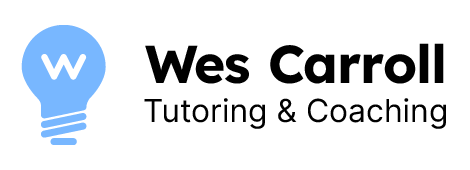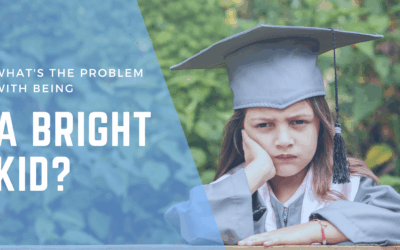You probably remember the quote:
There are known knowns. These are things we know that we know. There are known unknowns. That is to say, there are things that we know we don’t know. But there are also unknown unknowns. There are things we don’t know we don’t know.When it comes to STEM tutoring, test preparation, and contest preparation for especially strong students, this is a shockingly important concept. After all, strong students know a lot; they know what they know; and they are aware of things that they ought to know but don’t yet. But typically there are things that they are missing that they don’t even know that they are missing. And this is where most of the real trouble lies. I help these students recognize these “unknown unknowns” in their academic lives. The most common unknown unknown is a deficit in one of three qualities (which some colleagues helped me identify in a previous post):
- Fluent: the successful student knows the material and how it all interconnects. Otherwise, success is necessarily limited (of course). This category includes not only “I need to study more” but also “I had memorized that fact, but didn’t know how it was relevant to this question.”
- Present: the successful student is fully focused when engaging with the material. Otherwise, knowledge doesn’t matter; you’ll still flub it, e.g. by misreading the question, answering a different but related question, making an arithmetic error, doing too much in one’s head rather than on paper… in essence, a forehead-slapper. This is often missing in students who are so fluent that they aren’t used to having to focus 100% of their attention.
- Bold: the successful student is willing and able to make progress with incomplete information. It’s often called creativity, critical reasoning, or problem-solving. But at its core, it’s about reasoning successfully even when some pieces of the puzzle appear to be missing. This is often missing in students who are so fluent that they aren’t used to having anything less than complete information in the first place.



I’ve been using this taxonomy for a week or so with students. Here’s how it’s shaking out so far:
“Fluent” is the one that seems to hit the nail squarely on the head.
“Bold” seems to be doing its job well enough: in students who are intimidated by the unknown, it orients in a productive direction quickly and smoothly. The only down-side appears to be that it can encourage a bit of recklessness in the confident. All in all, that’s a tradeoff that I think I can work with.
“Present” is the one I still don’t feel satisfied with. I am finding that students who “aren’t present” don’t frame it that way for themselves, so the word fails to evoke the right perspective and/or changes. Also, it lacks a noun form, which turns out to be a bigger deal than I thought (that is, I can talk about fluency and boldness, but “presence” doesn’t connote what we want).
So I am turning over “Attentive” as an alternative. (“Meticulous” remains in the mix as well.) I’ll keep dropping these alternatives into conversations until one of them bubbles to the top of my mind as “the one that works best.”
(“Leave well enough alone,” you say? No, not my strong suit, I’m afraid.)
Such a brief, incomplete reply, but I have to say, I love the parallel structure of the terms. And I love that they are personal adjectives too, which resonate. I’d give ‘present’ some more run… ‘attentive’ has a connotation I don’t like… I’m not sure I’d ever want to be described as attentive, or hang around with anyone who is. ‘Present’ has some vagueness to it, but it also lands on the concept with some elegance. Keep thinking, but give that word more of a shot, I say.
IF bold makes students reckless, how about resilient? “if this doesn’t work, how about this? how about this?”
I actually like present. If presence (or the lack thereof) is a hard concept for some, it is not because it misses the mark. Presence reaches further upstream than meticulous; it is a way to be meticulous. I don’t use meticulous for the same reason I don’t use careless: it’s more consequence than cause. If presence is a difficult concept, they should put down their phones and get to know it better 🙂
“Present” does have a noun form: presence.
In my own experience, the third quality comes out of the second. A period (often prolonged and initially unproductive) of mindful, patient, attentive, intentional, *waiting* often necessarily precedes successful creative “quantum leaping” (i.e. breakthroughs in difficult problem solving).
Such patient waiting-for-the-light-bulb-to-go-on (awesome logo, Wes!) is one of the hardest things to train in students who don’t already have this skill, I’ve found. As Wes points out, it’s here where even top students can have a hard time, since they’re not used to having to wait for ideas; they’re normally able to come up with the right ones, almost immediately. [It’s also where attention-challenged average students can dig in their heels, throw up their arms in frustration, and refuse to continue with the exercise, arguing that “this isn’t working!”]
In this third realm, one has to intentionally and attentively search for a solution, yet be open and detached (unintentional) at the same time. One looks purposefully for some kind of connection, using a narrow focus on details, while at the same time keeping a defuse focus on the whole problem, open to having a brand new idea just fall in one’s lap. One tries to see both the trees and the forest – and keep both sharply in focus – until the light goes on.
Keeping that kind of paradoxical dual focus, and being patient enough to do so for long periods of time when nothing is connecting (till something does), is just hard. During this period, any and all distraction must be avoided; and impatience is normally the chief distraction, here.
I find it very helpful to repeat key words from the problem, asking/answering good questions about the problem, and attending to key elements of a diagram while engaged in this waiting game. Anything to keep the dual focus strong enough for long enough!
Being patient, but deliberate; intentional yet receptive; present and persistent. Is there a single word for all that? I don’t know …
To me, the best word for quality #3 is “creativity.” It’s part perspiration, part musical (from the Muses); Generally, it takes time on both sides of that particular coin to get the job done.
One more thing: ENERGY. Doing this takes a LOT of energy (and some students who aren’t in good intellectual condition just poop out before making a productive connection). It’s tiring.
But I fear the word “creativity” is to nebulous to be useful for your purposes, Wes. This third creative realm is DIFFICULT to pin down (we have several very bright people, beginning with Wes himself, flailing around trying to do just that in this post).
We can all agree that it feels GREAT when the breakthrough finally occurs … and this feeling invariably provides far more in the way of satisfaction than the waiting game costs in terms of frustration, boredom, and tedium. That’s the tease!
Fluent. Focused. Fearless.